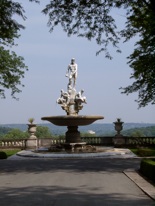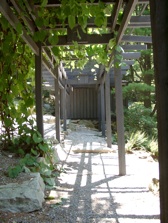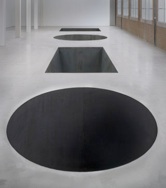arslocii
placeness as art


arslocii
placeness as art













Quest for artistic endeavor in
the Lower Hudson Valley
For the first organized trek, in search of art and site, we decided that an exploration of the Hudson Valley was a priority mission. Not only is it as breathtakingly beautiful a river as you will find, but it cozies up to the lovely Catskill Mountains – green, rounded and lush – a pairing made in, well, New York State.
There were past visits to Saratoga Springs, a very nice town but, when accessed via the thruway, offering no sense of what the Hudson looks like. Stopping in, in 1986, at the Storm King sculpture park on one of those trips was convenient and mandatory, with its artworks poking up and out to almost touching the thruway. It is probably the first park for sculpture (early 1960s) and, wow, still the best. It has a perfect balance of sculpture and landscape, so much so that they enhance one another and you couldn’t imagine either one solo. In fact, Storm King may be responsible for the overall arslocii quest, setting the bar for the meaningfulness of the art-to-site interaction. The artworks there seem as if they appeared full-blown, thrust out of the hilly terrain at just the right spots to favor the site and the work – they are, together, so skillfully connected. Must get back there, but not this trip. So close and yet so far, the proximity to Bear Mountain State Park is easy.
Which brings to mind Bear Mountain and its bridge, one of the shorter spans across the Hudson and one of the most scenic, as it dead-ends right into the mountain face (and it is such a pretty face), so that abrupt turns welcome you to the eastern side, after paying your fee at the charming tollhouse. If the New Jersey turnpike had booths like this one, people might be more willing to pay the tolls. Maybe.
Dia: Beacon
Beacon, NY
Sights were set on the Lower Valley with the first and furthest goal being Dia: Beacon. Dia – an art foundation founded in 1974 to enable the realization of unlikely-to-be-realized projects – is the keeper of earthworks, some here in the East and some out west, and a supporter of two of the most ambitious projects still in progress: James Turrell’s “Roden Crater” and Michael Heizer’s “City.”
Dia purchased, at Beacon, an old Nabisco plant (where much of their packaging was printed) and has done something surprising (as usual) by getting a number of artists who generally are site-specific or land artists, and putting their works in the building or having them do pieces specifically for the building’s interior. There were no site works outside except for Robert Irwin’s forecourt (ordered nature) and a small garden with taped “Birdcalls” (giving the bird to male superstar artists?) by Louise Lawler. Nothing big and outdoorsy, like the work that most of Dia’s stable of artists usually makes.
So, imagine the surprise at finding Richard Serra and Michael Heizer work inside. There aren’t that many “insides” that could hold them. This one can. The work by these two artists is so impressive that there is a tendency to overlook some art by others in this vast complex, and there is a lot. Heizer’s “North, East, South, West” is made up entirely of negative space: huge holes in the floor, perfectly rendered geometric voids (as if made with some giant router, or die cutter). How many works made of empty space could engage the viewer so completely? There is something primal about the effect – the infinite black holes that you can’t find the bottom of, contrasted with the white polished cement floor, the precision of the shapes, the relationship with the space (a wall of windows in geometric array stand as guardians above the holes and bring natural light into the mix, enhancing the light-to-dark contrast). Serra’s “Torqued Ellipses” (looking like what was cut from Heizer’s holes) are subtly delicate and massive leaning creatures – a herd, if you will, but so very oversized for any indoor space except this one, which is like an airplane hangar. Again, it seems unimaginable that they would look so appropriate and intentional anywhere else. Also, Serra’s “Union of the Torus and the Sphere” – when you get over the wondering of “how did they ever get this in here?” – is one of the most poetic and magically sited works (move over Storm King), powerfully dominating a very tight-dimensioned inner room, conjuring up the image of a ship in a bottle. But that’s too simplistic for the revelation of this object in this space – it is almost sacred. Remember, this is interior landscape taken to a place we’ve never been before. And from the exceedingly massive to the most minimal, Fred Sandback’s nearly ethereal “Ten Vertical Constructions” are works of spatial definition in string that express their relationship to their surroundings in such an understated way – that is their power. All of these artists bring about an almost Zen-like “aha” moment: no understanding and complete understanding, iconic and mind-blowing, the real made more real.
Manitoga
Garrison, NY
It is hard to top the experience at Dia, but our next date was with Manitoga (Dragon Rock), the other-worldly landscape and home of the famous industrial designer Russel Wright. We have a set of his designed tableware, by way of a wedding gift to one set of parents in the 1940s (what newlyweds would be without them?), and there was a need to see from whence they came.
Wright bought a spent quarry (there are more of these stripped hillsides than we care to ponder in the Hudson Valley region), where he built his home and (re)built the landscape. It all looks so very natural and original, but it is not. He created a lake from the deepest-dug pit and built his home and studio on the rocks above. Wright was heavily influenced by Asian architecture, and it is apparent in his choice of materials, as well as the integration of interior and exterior space, balancing nature and built environment. There is an innocence and freedom of design to both the house and the site that our current days of self-consciousness and egomaniacal self-promotion could not produce, although the industrial designer himself was a promotional genius when it came to his product designs. But at home, his world was more integrated and more conceptual, including a woodland which he generated, lots of rock outcroppings and, our personal favorite, a moss garden. The homestead and the grounds, thankfully, have not been glitzed up for the tourist crowd – it looks as if the Wrights are just out walking in the woods and we are uninvited guests. Most tourists would not want to trek through woodland paths with poison ivy all around to see sparsely designed rooms that mostly look out to the woods anyway. The beauty here is even more subtle than the modern designs he created and dispersed to the world. It is a treasure, to be sure, a personal vision of a man who wanted to design the world back to life.
The James Rose Center Ridgewood, NJ
It is natural to compare Manitoga to The James Rose Center since both of the men who built these unique Waldenesque retreats were following a remarkably similar idea at about the same time. The difference is, whereas Wright chose an isolated site for his home and studio, Rose, a landscape architect, chose a suburban neighborhood in New Jersey. Originally a village, Ridgewood became an upscale suburban enclave in the early 20th century. Situated on a relatively tiny corner parcel is Rose’s experimental vision, an intermingling of manmade and nature, structure and plant life – all looking as if they have grown together into one new hybrid species of manufactured materials and native ones. On first viewing the property from the street, we thought it was an abandoned site since it appeared overgrown and indistinct as a recognizable house and yard in comparison to the coiffed neighboring lots, the usual suspects of small-scale British-style country estates on half-acre lots. The thing is, the other properties are the ones out of place; it’s just that they are the majority. Rose, in addition to Wright, was influenced by Asian design, and the openness of the house to the garden makes you think that you are in Oahu rather than New Jersey, so practicality be damned. The overall effect of his efforts is a bit more surreal and theatrical with more of a blurring of the edges of where nature begins and built environment ends, because the two are so inextricably linked. It’s such a pleasant surprise, a gift in an otherwise cookie-cutter environment; the small estate has a playful seriousness, a fascinating use of building materials and the magician’s hand when it comes to a transformation of both architecture and landscape. His sense of space and how to use it is impressive because, after walking in and out of the house and garden, you feel that it is a much larger place than it really is. And it does achieve a true balance.
Donald M. Kendall Sculpture Park
at PepsiCo, Purchase, NY
Let’s say, right up front, that going to the headquarters of Pepsi-Cola is something we never dreamed of doing, or even wanting to do. We do not drink their beverages or eat their foods, and we are no fans of places that put corporate conspicuous greed on a pedestal; that being said, they do have an impressive sculpture collection. Is it well-sited, vis a vis Storm King? Not so much. Most of the work is plopped around the centerpiece late-1960s Edward Durell Stone-designed office buildings on a fairly uniform-looking, almost golf course-style landscape (some sources say that it was once a polo field) – plenty of broad lawn for even the largest Anglophile appetites. The most impressive thing is the horticulture collection – first laid out by Durell’s son, Edward Jr., then redesigned in the 1980s by British landscape architect Russell Page, and later overseen by garden designer Francois Goffinet – which surrounds the spacious lawns and weaves in and out of the serpentine paths and the smaller designed garden areas. There are amazing specimen trees, both native and non, a specially shaped and serene lily pond with more blooming plants than would seem possible (plus the surreal vision of the pond-tender walking around amidst the lilies, up to his chest in the water wearing a huge straw hat and tending the flowers like a giant bee). One particularly impressive interaction between sculpture and plants is a piece by Louise Nevelson nestled in a pleached beech hedge, acting like a natural exedra. But, basically, with a few exceptions (Oldenburg & van Bruggen’s “Giant Trowel II” and Judith Brown’s “Caryatid”), this is more a beautifully arranged garden with attractively placed sculpture than a real arslocii.
Kykuit
Sleepy Hollow, NY
Just a quick mention of the Rockefeller manse, Kykuit. If you like excess, this one’s for you. The house and the garden are overwrought, but what do you expect from royalty? The gardens are pretty in a formally proscribed sort of way, structured and rigid, with an occasional “best of” success, like the contained wisteria on the facade of the house, descending terraces and pairings of field stone and vines. The best thing (besides the view of the Hudson from the site) is the rec room in the basement where Nelson hung out – furnished very differently from the upstairs and in a very modern way. In among the ’60s contemporary style is a collection of art not dissimilar to MoMA’s holdings (no surprise, as is the sculpture out on the grounds) and a most amazing thing – the Picasso tapestries. Nelson collected tapestry from all over the world and decided to commission Picasso to create weavings of some of Nelson’s favorites of the artist’s paintings. It’s odd how they look familiar but they don’t. They are large and would make great carpets, and it’s surprising that Picasso didn’t see the capital in that.
arslocii, a creation of Probasco Haus Press
copyright © 2010 Probasco Haus Press LLC





Picasso’s “Harlequin,” done in tapestry, Kykuit.
Top: Kykuit view toward the Hudson.
Bottom: Manitoga and its setting.
Right: Oldenburg & van Bruggen’s “Giant Trowel II” at Pepsico.







Links

